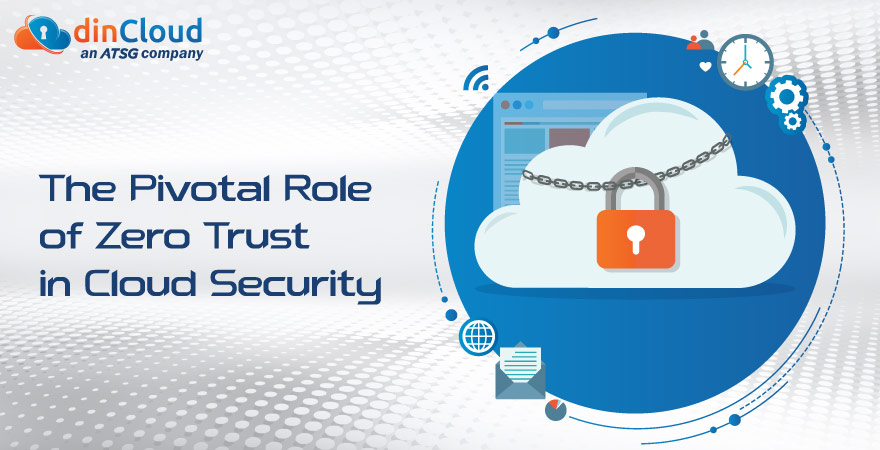The digital footprint of enterprises is constantly on the rise. Most of this new digital footprint that is being added to the existing one is Cloud based. Cloud Computing solutions are gaining a lot of traction due to their flexibility, agility and scalability.
However, when it comes to cloud security, there are a lot of factors at play, and some of those are not part of legacy, on-premise IT infrastructures. The unrivaled ease of access associated with cloud solutions also raises the stakes for cloud security.

Over the Cloud, employees are remotely accessing enterprise data, applications and workloads. The devices that employees use for accessing these resources over the Cloud may either be company owned, personal ones, or even random devices.
Related: Why Zero Trust Security Strategy is Future for Businesses
So, it becomes really essential to determine which user accesses which parts of the enterprise network, data and applications hosted over the cloud. Secondly, this cannot be a perpetual trust or permission, and needs to be governed by some checks and balances.
The Guiding Principles of Zero Trust Architectures
Now that we have underscored the importance of a mechanism for granting users access to enterprise resources over the Cloud, let us discuss what zero trust architectures are. Any zero trust architecture is based on the principle of denying all, while permitting some.
This is proving a very effective means of securing IT infrastructures in general, and Cloud Computing environments in particular. Zero Trust systems necessitate that the identity of every user is verified before granting access to sensitive enterprise resources.
Why is Zero Trust Vital for Cloud Environments?
Unlike on-premise IT infrastructures that are well secured, restricted and structured, the Cloud thrives on its flexibility and ease of access. However, who gets access to all these easily accessible resources, why and how are important questions to address.
This is exactly where the role of Zero Trust Security architectures comes into play. Let us discuss some defining elements of zero trust systems, in the specific context of cloud computing environments.
Related: How to Navigate the Journey Towards Zero Trust Security?
User’s Identity
The foremost step in implementing a solid zero trust architecture will be establishing the user’s identity beyond doubt. For this, a combination of personal and dynamic attributes of the user should be deployed, to rule out the possibility of identity theft.
End User’s Device
As discussed earlier, end users are free to use a host of devices when accessing organizational resources over the Cloud. However, the devices that an end user will be using for accessing cloud resources can be classified into two broad categories.
One of these could be trust worthy, patched and secured company owned devices that remote employees are using these days. This by no means implies that the user authentication part can be skipped, as company owned devices are also prone to misuse.
The other, and more critical element of employee devices are personal or third party devices. Many security related concerns can be associated to such devices. In zero trust systems, such end user devices are given access only upon successful validation.
Related: Zero Trust Security – An Effective Risk Mitigation Model
Least Privileged and Role Based Access
Once a user, and the endpoint devices have been successfully vetted, there comes the all important task of giving a validated employee access to cloud resources, but following the least privileged principle.
This aspect of zero trust emphasizes that employees will be given access to cloud resources, strictly in accordance with their assigned tasks and job roles. This will not only improve the cyber security posture, but also improve the organization’s privacy posture.
Features of a Well Designed Zero Trust Environment
Now, let us highlight some defining features of a well conceived and executed zero trust environment in the Cloud.
Ease of Accessibility
A zero trust environment by no means aims to make the accessibility of cloud resources any difficult for the employees. Instead, only the initial validation stage is somewhat a hurdle, but it is for the overall betterment of the entire environment as a whole.
Least Privilege and Strict Access Management
Once into the cloud environment of an enterprise, the end users or employees will be allowed access only to those segments of the infrastructure that are limited to their specific department, job role or nature of assignments.
Related: Why Zero Trust Security Makes More Sense than VPNs?
If any access, in addition to the assigned job role is required, whether temporary or permanent, it will be documented with proper authorization and the rationale behind it. This will incorporate a sense of accountability among IT admins and users alike.
Monitoring and Analysis of Logs
In large cloud environments, involving thousands of employees and multiple geographical locations, it is important to monitor and analyze activity logs for any anomaly or abnormal behavior. Any such incidents must raise a red flat, and need to be investigated.
Conclusion
Due to the constantly increasing complexity of IT environments, Zero Trust Security models will play a vital role in the overall improvement of their Cyber Security, Data Privacy and Regulatory Compliance postures.
Contact dinCloud, and ATSG company, for a wide range of cloud solutions that come with a robust Two Factor Authentication (2FA) solution.


